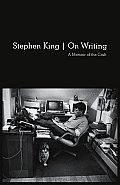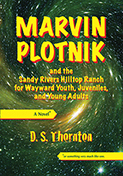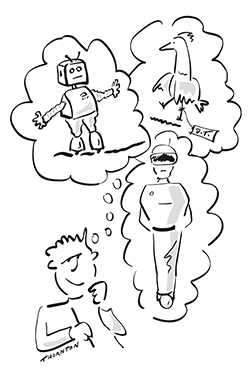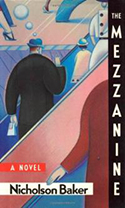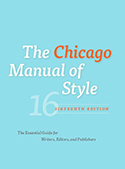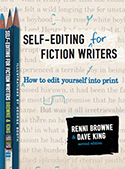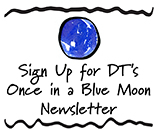I’VE PUT ASIDE THIS PAGE for thoughts about writing and publishing…
Outline or Wing It?
I was recently asked how much I plan when I’m writing a novel. Do I outline? Or do I do what Stephen King does, “flail about at the typewriter,” and hope everything falls into place?
No matter how much I TRIED to plan, I always seemed to end up going off on tangents, or my characters do something I hadn’t expected, or I have a plot revelation. (They don’t go together, they split up! He doesn’t shoot her; she shoots him! They’re not in a cave, they’re on a starship!), and then I’m reassessing again. Outlines, therefore, don’t seem to work for me. Stuff happens. My outlines were worth about as much as the piece of paper they were written on.
What I preferred, in my almost-winging-it method, was a vague roadmap. I’d know certain things were going to happen (or at least I’d want them to), I just might not know when they were going to happen or how they were going to happen. The roadmap also included things I’d promised the reader, things that should happen, and things that needed to be answered. (RIP, Lost. Don’t get me going.)
Then I did an experiment in no planning. I think it came out pretty good. Right after I finished my middle-grade fantasy, SCRAP CITY, which had a more or less straightforward a-to-b-to-c linear plot (with occasional backstory flashbacks), I wanted to see what it would be like if I went off on whatever tangent my little heart desired. I wanted it to be fun.
First off: silly title. MARVIN PLOTNIK AND THE SANDY RIVERS HILLTOP RANCH FOR WAYWARD YOUTH, JUVENILES, AND YOUNG ADULTS. The tone was set. I then introduced the not-so-transparent narrative device of a digression-prone narrator (because, you see, that’s how they do it on his planet). Then, boom, I’m making fun of the writing process and all its time-honored conventions: I’m calling attention to the fact I’m in the middle of a plot summary; I’m pointing out narrative devices as narrative devices; I’m breaking the fourth wall and talking directly to my audience; I’m riffing on Shakespeare and Pluto and déjà vu and time travel and the Great Rogullian Way Station of Earth and phlebotenum fields and silly religions; I’m using footnotes. (Because, let’s face it, what’s funnier than a footnote?) I came up with oh-so-clever ruses like pretending there’d been a writer vs. editor rift, that I had an anal-retentive editorial assistant, and the like. I became the smart-mouthed heckler to my own narration.
If it made me laugh, I went with it. And guess what? I was having fun.
Later, of course, half of it disappeared into the crap-I-want-to-use-someday-assuming-it-still-makes-me-giggle file or just the virtual waste-bin, and the rest was structured as much as it could be while trying to keep the seat-of-the-pants feel going. (It still had to have a plot, mind you; it still had to be a story.)
So today, when you pick up MARVIN PLOTNIK, from the cover on you can tell it was a seat-of-the-author’s-pants endeavor. You can tell it’s going to be a little different. It’s supposed to be different. Even the copyright page is different. It’s not an a-b-c-d storyline. It’s more like an a-b-w-dinosaur storyline. It’s for people who like different. And footnotes.
So that’s NO planning. Or, perhaps, post-planning. And I don’t think I’d do it again. Trying to make a cohesive story in the middle of digressions is hard. Better to have the story first. (And if Marvin is ever to have a sequel, better to have a story, THEN riff on it.)
But does the story need to be set up as an outline?
Something else came out of MARVIN. While figuring out the plot (yes, there really is a plot), an interesting method came up. Which made me a lot more organized.
Today, when I write, I’m determined not to waste precious time on scenes that for one reason or another won’t make the final draft. (And no, “final draft” is not an oxymoron like “jumbo shrimp.” I mean, “before I hand it over to the editors.”) MY problem is, I cannot get a feel for a scene (all its nuance and detail), without watching it play out. And I can’t “watch” it if it’s just your run-of-the-mill outline. I can barely picture it if it’s just an outline.
So I came up with a method that gives me much more headway in getting the whole story out. And that’s the key. Get the whole damn story out, THEN perfect it…
Here, then, is D. S. Thornton’s Patented Loosey Goosey Scene-Blocking System ™(r)(c):
Ok, that subhead was a lie. First I want to take a paragraph to tell you about “rock rustling.” “Rock rustling? What the what?” Yes, rock rustling…
Years ago, my husband and a neighbor would er, “collect” large rocks from the side of the road or farmer’s fields for our gardens. (We were pretty much rockless at home, and were too cheap to go to the gravel yard.) Their truck engine idling, our neighbor would always remind my husband, “Move quickly and don’t be greedy.”
So let’s call this loosey-goosey method of mine the “don’t be greedy” method of story blocking. i.e., you don’t need all the rocks in the truck at once. I.e. again, I don’t get greedy, wanting to see what marvelous, poetic and unabashedly {ahem} genius way I’m going to handle the scene. I just get on with it. I move quickly. I don’t stick around, fussing with it. I keep the engine in gear! I get down what I want to happen — loosely — then go on to the next scene. Er, rock.
Let’s pretend the scene’s about a girl who’s lost an important map to the bad guys and needs to get it back. An outline would have it:
• Ellie-Mae gets map, runs off.
But I have to see it so I know what happens next, so I might write something like:
Ellie-Mae goes to bad guy’s hideout, finds the map in a drawer, hears a noise, goes downstairs to investigate, sees the men, tears out of there with map in hand.
OR, I might write:
Ellie-Mae shows up at the hideout exhausted from the walk from town in the rain. She sees the lights are out, which means the men aren’t back. She breaks into a back window, noses around, and finds the map in an upstairs bedroom. She hears noises, peeks downstairs, finds the men have arrived, sneaks out the bedroom window, cuts her arm on the glass, and, injured, heads off into the woods with the map.
I might even include a sentence or snippet or a bit of dialog I don’t want to forget.
Now that’s a whole chapter. Eventually it’s going to be 5-, 10-, 20-pages long. Maybe. But now it’s just a rough idea of what’s going to happen, broken down into its components. It’s figured out. It’s like the script that I, the great director/cinematographer/storyboard artist, will later mold into {ahem again} art. (uh, we hope.)
Recently, my editor asked for an outline of another book, and requested “a paragraph or two for every page.” I think that’s a good roadmap for planning. So a 200-page book would have approx 200 paragraphs of loosey-goosey-ness.
Next step is to actually WRITE the damn thing, presenting it in the author’s incomparable {ahem thrice} cinematic and oh-so-literary {ahem whatever 4 times is} way. At that point, it’ll be real writing. I’ll add details about the hideout — it’s a cabin, no, it’s a warehouse — about how Ellie-Mae picks up a porcelain cup that looks just like the one her mother loved, about Ellie-Mae’s heart racing, shivering and being soaked through from the rain, about how the sound downstairs sounded like a chair being pulled across the floor, about the trail of blood tickling its way down her arm, etc. All those things that matter to a story — character, setting, “camera angles,” “props.”
But that’s later. Right now I’m just blocking out the scene. I’M JUST GETTING THE FRICKIN’ STORY OUT.
And hey, sometimes — sometimes — “more outliney” (Ellie-Mae gets map, runs off) is the only way I can swing it at the oment. Sometimes all I know is one plot point. I have to leave it at “Ellie-Mae gets the map back” and go on to the next scene. Because I might not know enough yet to even loosely block it out. Then, as soon as is feasible, I’ll come back and add in a little more info. Sometimes I have to go back from the very next chapter and add a little something. Ooh, it’d be good of Ellie-Mae was limping here. Go back and have her cut her leg, not her arm. That kind of thing. The whole point is to GO ON.
So. Not an outline. A script. A pre-opsis (a synopsis before the fact). Loosey-goosey.
It’s the only way I’ve found to complete my story and not get hung up, you know, in writing. Nothing will slow you down more than trying to find the right word a character might use for “exasperated.” (Keep the engine in gear! If you can’t think of a better word than “exasperated,” put it in brackets to tell yourself you need to find the right word later.)
It’s still easy at this point to move scenes around or add characters or plug in that clue I figured out sixteen chapters later. Like what if I decide later that she’s not even going to go to the hideout, it would be better if she found the map on a dead body or in a cave or on a dead body in a cave, and I’d wasted a week — or a month, or {gasp!} six months — working on that damn hideout? I cannot tell you how many weeks, months, years, I’ve wasted writing scenes that ended up tossed salad.
Then, slowly but surely, all the details are in. One little detail after another, until, ta-da, one day, the story is written.
Now… let’s see how long I stick with it.
For help on plotting what will happen NEXT, I found this article really helpful: http://timetowrite.blogs.com/
Advice for New Writers
Boy, do I have advice. If I can save even one other writer from spinning their writing wheels like I’ve done over the years, my job here is done.
In no particular order:
- As I said above, get the whole story out before you start perfecting it. Don’t keep rewriting that same sentence/paragraph/chapter. That sentence/paragraph/chapter might not even BE there later. (Corollary: Unless it’s a little thing or a note to remind yourself of something big you forgot or want to change, DON’T GO BACK. Keep going, keep going, keep going.)
- Remember, first and foremost, it’s a STORY; it’s not just a way to connect a bunch of words together for 300 pages to impress your girlfriend.
- Character = action. Show your readers who your character is by what they DO. Your character is NOTHING just sitting there thinking about himself or taking crap from someone and not reacting. Not only is he just a prop if you do that, he’s a boring prop.
- Write in scenes. New scene = new chapter (or at least new section).
- Make like Elmore Leonard and skip the parts people don’t read. (“I try to leave out the parts that people skip.”) Don’t spend too much time on the “stage directions,” “scenery,” or “costumes” – you need all that, but you don’t need so much of it. There are very few writers who are great at lengthy scenery descriptions. And unless you’re Ken Kesey or Salmon Rushdie, you’re probably going to fall short. A paragraph (or its equivalent weaved through the scene) is usually enough to describe the scenery. And when you do weave it in, don’t make it obvious. You can always tell a beginner bc they try to sneak in a description on every line.
- Cut down on the adjectives! We don’t need to know it was a red plaid flannel shirt. It’s red or it’s plaid. Pick one. Or leave them out and just call it a flannel shirt. Trust your readers to imagine what they want. If you’ve got more than two adjectives for a noun, something’s wrong. Even two is too much most of the time. And for God’s sake, don’t tell your readers what brand of shoes your character is wearing. They don’t care and it makes you look like you have a clothes fetish. Give them something to imagine.
- Steer clear of Cataloguese. If your descriptions sound like they came out of a J. Crew catalog, you’re going to lose some readers. “Her soft mint shorts clashed with her sea glass sweater.” Really? Ow.
- Make sure your reader knows where everything is. That means each character, each place, and each “prop.” And make sure you remember, too! You don’t want to have a guy sitting in one paragraph, then magically be standing at the window a few grafs later. (I’m embarrassed how many times I’ve found this stuff when proofing my own manuscripts.) You don’t want your hero to travel east from the hideout to get to the warehouse, then next time travel west to get there. And you can’t have a guy pick up a gun from the table in the parlor, when the last time we saw it, it was in the hall.
- Also make sure your characters don’t know more information than they knew last we checked. And if they do, explain it. Or, rather, have a character explain it.
- Wait. Did I just say “explain”? There’s explain and there’s explain. If you say, “Mrs. Springton was a snooty woman who looked down upon everyone she met,” your reader is going to have to concentrate to picture what you mean. But if you show them Mrs. Springton turning her back to a woman in rags, we’ll get that she’s snooty and mean. … On the other hand, if you want your reader to understand why your character just showed up out of the blue covered in paint and wearing a cape, you’re going to have to explain it. Or, rather, your character is going to have to explain it. But watch this one, too, because if your characters start sounding like Exposition Joes, you’ve gone too far. The test is this: if the only reason they’re saying something (or thinking it) is to tell a plot point to your readers, make sure it fits in with the situation. Would a bartender really say, “Charlie’s in the hospital because Franky let him have it with a sledgehammer”? I dunno. Maybe. But be careful with it.
- Wait again. Notice I said, “explain.” I did not say, “tell.” You know, as in, “show, don’t tell”? Because sometimes you have to tell. It’s not ALL showing. “It was the best of times, it was the worst of times” anyone? Just “tell” sparingly, that’s all. Sometimes, you have to. Sometimes you ought to.
- When and where your dialog takes place matters. If you’re going to have your characters have a discussion that’s handing out information, have them have it while doing something else that furthers the story. And try to vary it. Don’t get caught in West Wing hallway walk. Do your characters always talk in cafes or restaurants? Is that all these people do? And do they only talk about what’s going on? Take a hint from Pulp Fiction and have them talk about two things at once.
- Again, character = action. When they are talking, are your characters just standing there? Have them move about the room, pick up objects, interrupt by talking about those objects, etc. Even their breathing can interrupt a he said/she said/he said/she said bore fest. But again, you also need straight back-and-forth. It’s all about balance.
-
D. S. Thornton’s Rule of Timing: I’m taking credit on this one bc I have never heard or read anyone say this in any writing advice, and it’s one of those things that drives me batcrap crazy if I see it done… Don’t let a description take longer to read than it would for the thing to really happen or for a camera to show it. Obvious Example: You can’t have a character hanging onto a windowsill peering into a room and take longer to describe what’s in that room than the poor guy can hold on. You can’t have one guy ask another guy a question, then insert two full paragraphs before the 2nd guy answers. If you’re going to do that, you have to say something like, “In the two seconds it took Bill to answer, he’d thought about the time he blah blah blah… Was he really as lame as he felt?” i.e., You have to make clear why those paragraphs are interrupting the timing of the answer. You can’t have a character stand on a chair to put something up on a shelf, go through five grafs of other things happening in the room, or his own ruminations about life and the hellhole it’s put him, then have him get off the chair. The reader is wondering, “he’s been up on that chair this whole time?” (Unless you’re Nicholson Baker. His entire book The Mezzanine takes place during a single escalator ride.)
- Don’t try to write like someone else. It’s YOUR voice, not someone else’s.
- Take a quick look at a page of your ms. and blur your eyes. If it’s solid gray, you have a problem. Balance dialog and action. Break up dialog, but don’t break it up so much that it’s not cohesive anymore, so it doesn’t flow. An action after or before every utterance can be extremely annoying. Vary your word, sentence and paragraph lengths. In fact, VARY EVERYTHING. Always always always.
- Listen to Stephen King: “The road to hell is paved with adverbs.” Use them only if you have to. (And sometimes you do.) There’s nothing that sticks out like a bad-writing thumb like, “Jim looked at her longingly.” It makes my teeth hurt.
- How do you make your reader care about your characters? It’s not so much “care” as it is “worry.” How to accomplish it? Put them in a wheelchair? Kill off their mother? Give them an incurable disease? Sure, that can work, but showing your reader that your character has some kind of need or want (a father’s love, a yearning for attention, a fear they can’t overcome, putting things in order before they die, getting the map back before the world ends, showing their brother this dreadful disease isn’t going to hold them back, etc.), shows us the character is human. (Unless they’re a bunny. So let’s say “human-like.”)
- Throw a bunch of stuff at your protagonist. Give them more than one thing to stress out about. I read years ago – sorry, don’t know where it came from – that the object in a story is to get your character up a tree, and then throw rocks at him. Give him more than one conflict. But give him conflicts that are believable. Ever wonder, when you’re watching a movie, what’s up with that guy? Why’s he so angry? You don’t want your readers to be thinking, “What’s his problem?” You want your readers to totally get his problem. And to totally get why he has to solve it.
- Do your homework. If you’ve set your story in Alaska, find out what it’s like there. Personally, beyond, say, the general location, I rarely use real places. I make up names that sound like real places, but aren’t. This way, I can’t get it wrong. Someone is sure to tell me that there aren’t mesas in Texas, but hey, I haven’t said a real place in Texas, right? It’s a big frickin’ state; surely there’s a mesa there somewhere. Also, along the way, Google names. Nothing is more embarrassing than naming a character after someone famous without realizing it or making up a company or web site that really exists.
- Do you look like a beginner? Here’s some of my pet peeves I see all the freakin’ time: Our protagonist looks at himself in a mirror so the reader will know what he looks like. Could there be a cheaper narrative device? … Uh oh, there’s that one-word sentence, “Hard.” When I see this, I know it’s a writer’s first story. “He frowned at her. Hard.” Ouch. I’ve done it myself! (Then again, I had a writing teacher tell me never to start a sentence with “It.” Others hate the phrase “in those days.”) I probably do crap you hate, too. We all have our pet peeves. … “Said” is a perfectly good dialog attribute. It’s practically invisible. You just don’t need it every line. An occasional “replied” or “asked” is good, but occasional, please!
- Read like a writer; write like a reader. When you’re reading other people’s stuff – good stuff, don’t waste your time on crap (if a book doesn’t keep your interest by page 20 or 30, pick up another one) – make note of HOW they did what they did. For instance, I noticed in Tom Wolfe’s Bonfire of the Vanities that every chapter starts a different way. Some start in the middle of dialog, some start with a character entering a room, some with a description, etc. Make yourself a writer’s note file. Some day, when you’re stuck, open the file and you’ll find a treasure trove of good ideas.
- Spelling counts.
- So does punctuation.*
- Therefore, save your copy editor some grief. Get yourself a copy of Self-Editing for Fiction Writers (Browne/King) and Chicago Manual of Style. The absolute best nuts-and-bolts books on the mechanics of writing. Yes, commas and periods go inside end-quotes; yes, if it’s a new speaker, it’s a new paragraph (and if it’s an action by a new character, it needs a new graf, too); yes, showing IS better than telling; yes, short sentences mean quick action; yes, the last person you mentioned is assumed to be the one you’re talking about next. Semi-colons separate what would otherwise be two whole sentences (or to separate complex lists in which there are commas). In dialog, ellipses (…) are used for voice trailing off; em-dashes are used for abrupt stops or interruptions in the middle of speech.
and finally, the lesson I learn at least once a week…
- Don’t waste writing time writing things that aren’t your book. Do you really need to update your blog every day? Every two days? Every week? Do you really need to tell your friends on Facebook or Twitter what you had for dinner? Every word you write somewhere else (even here!) is a word that could have been written in your story. (Course one would hope it would be a different word.) You can only write x-amount of words in your lifetime. You gonna use them for tweets and email? (Caveat: if someone sends you an email and asks a question, fer cryin’ out loud, hit reply and answer it!)
*Yup, that was not a whole sentence. Sue me.
The Best Books on Writing
Self-Editing for Fiction Writers by Renni Browne & Dave King
Robert’s Rules of Writing by Robert Masello (I have to say this is the best darn book on the particulars of writing I’ve ever read. Masello tosses some conventional advice out of the window and extols the virtues of planning, but he also gives some hard-earned and specific advice on keeping your readers entertained without making a fool of yourself. He’s also pretty funny. Unfortunately, it looks like the book is out of print — except for Kindle ed. — but I got a used copy on amazon that I’ve since dog-eared to death. Masello has written both novels and screenplays, and has really good screenwriter advice, too. I have found things in there that I have never seen before or since, and I thank Mr. Masello for every little gem.)
On Writing by Stephen King (Half of it is autobiography about his accident, the rest is gold.)
Story by Robert McKee (on screenwriting, has great examples). McKee is the guy they made fun of in the movie Adaptation, but I don’t care; I got a lot out of this book.
Telling Lies for Fun and Profit by Lawrence Block (I haven’t read this in a while, but the example he uses where he tells how swapping chapters 1 and 2 once fixed a problem has stuck with me for years.)
How to Write a Damn Good Novel by James N. Frey (It’s old but it’s got some good examples.)
##
All content except where noted (c) D. S. Thornton. All rights reserved.

